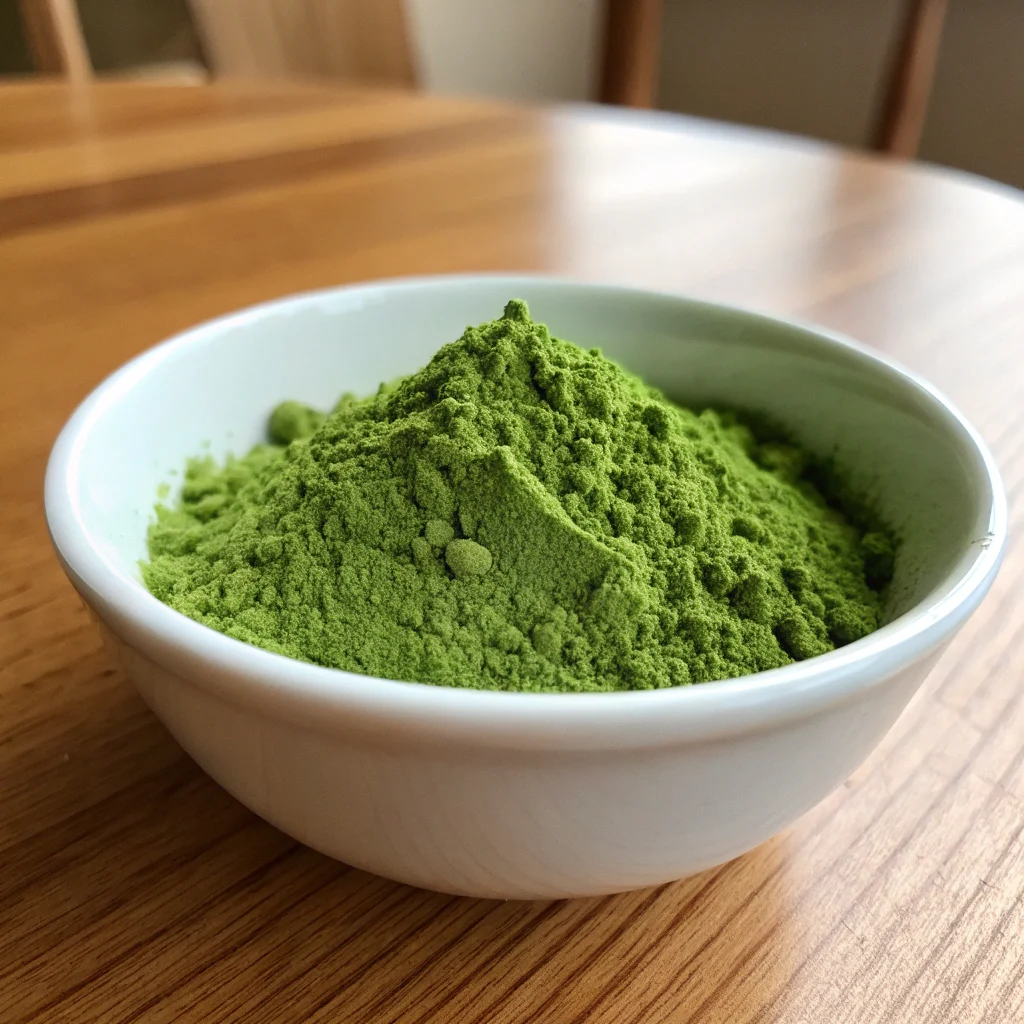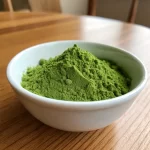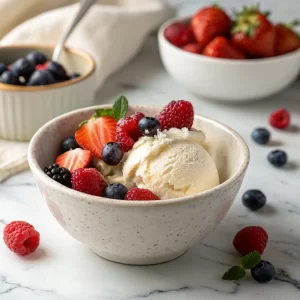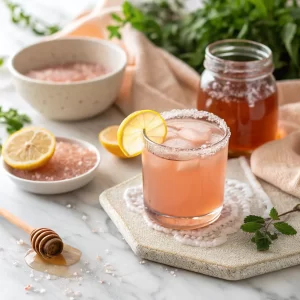Matcha Tea is a finely ground powder made from specially cultivated green tea leaves. Unlike traditional green tea, where leaves are steeped and discarded, matcha involves consuming the entire leaf, providing a more concentrated source of nutrients and antioxidants. This vibrant green tea has been a staple in Japanese culture for centuries and is now gaining popularity worldwide for its unique flavor and health benefits.
Table of Content
Table of Contents
Part 1: Understanding Matcha Tea
What is Matcha Tea?
Matcha is a type of powdered green tea that originates from Japan. The term “matcha” comes from the Japanese words “ma” (ground) and “cha” (tea). It is made from the leaves of the Camellia sinensis plant, the same plant used for other types of green tea. However, matcha is grown and processed differently to enhance its flavor and nutritional content.
How is Matcha Tea Made?
The production of matcha involves several meticulous steps:
- Shade-Growing: Tea plants are covered to avoid direct sunlight for about 20–30 days before harvest. This process increases chlorophyll levels and enhances the amino acid content, giving matcha its vibrant green color and rich flavor.
- Harvesting: Only the youngest, most tender leaves are picked. These leaves are known for their superior quality and flavor.
- Steaming: Leaves are steamed to prevent fermentation, preserving their green color and nutritional content.
- Drying and Grinding: After drying, the leaves are deveined and destemmed, then stone-ground into a fine powder. This traditional process results in a vibrant green powder known for its rich flavor and health benefits.
This traditional process results in a vibrant green powder known for its rich flavor and health benefits.
PrintMatcha Tea
Matcha Tea is a vibrant green tea powder with centuries-old roots in Japanese culture, known for its rich flavor, antioxidants, and calming energy boost.
- Prep Time: 5 minutes
- Cook Time: 0 minutes
- Total Time: 5 minutes
- Yield: 1 serving 1x
- Category: Beverage
- Method: Whisked
- Cuisine: Japanese
Ingredients
- 1–2 teaspoons ceremonial grade matcha powder
- Hot water (around 175°F)
- Bamboo whisk or handheld frother
- Matcha bowl or mug
- Sifter
- Spoon or chashaku
Instructions
- Sift 1–2 teaspoons of matcha powder into a bowl to avoid clumps.
- Add a small amount of hot water (around 175°F).
- Whisk in a zigzag motion until a frothy layer forms.
- Drink straight or add warm milk for a latte.
- Optional: Blend into smoothies, baked goods, or desserts for a twist.
Notes
Store matcha in a sealed container in the fridge to maintain freshness. Use within 1–2 months for best flavor. Start with a small amount and adjust to taste.
Nutrition
- Serving Size: 1 cup
- Calories: 5
- Sugar: 0g
- Sodium: 0mg
- Fat: 0g
- Saturated Fat: 0g
- Unsaturated Fat: 0g
- Trans Fat: 0g
- Carbohydrates: 1g
- Fiber: 0g
- Protein: 0g
- Cholesterol: 0mg
Keywords: matcha, green tea, Japanese tea, antioxidant, healthy beverage
Health Benefits of Matcha Tea
Loaded with Antioxidants and Nutrients
Matcha’s not just for show—it’s packed with antioxidants, especially EGCG, which fights inflammation and cell damage. Plus, you get a dose of vitamins A, C, and K, along with fiber and chlorophyll. Way more potent than regular green tea.
Boosts Focus Without the Crash
Thanks to caffeine and L-theanine, matcha offers a calm, steady energy boost. No coffee jitters here—just improved focus, memory, and alertness. It’s that smooth, clean mental clarity people rave about.
Helps Burn Fat and Detox Naturally
Studies show matcha can boost metabolism and increase fat burning. It’s also rich in chlorophyll, which helps your body detox naturally. Think of it as a green kickstart for your system.
Heart-Healthy Perks
Matcha may help lower bad cholesterol and support a healthy heart. A cup a day could be a small step toward a longer, healthier life.
How to Make Matcha Tea at Home
Picking the Best Matcha Tea
Let’s be real—matcha tea can be a little confusing at first. You’ve got ceremonial grade, which is the fancy, drink-it-straight kind (bright green and naturally sweet), and culinary grade, which is more for mixing into smoothies or baking. If you’re just starting out, go for ceremonial matcha—you’ll actually taste what all the hype is about.
What You Need (Don’t Worry, It’s Simple)
No need for a tea master’s toolkit here. These basics will get you sipping in no time:
- Matcha bowl or mug
- Bamboo whisk (chasen) or a handheld frother
- Sifter (a must to avoid clumps)
- Spoon or chashaku (the curved bamboo one)
Check out this Jade Leaf Matcha Traditional Starter Set on Amazon—it includes all the essentials: a bamboo whisk, scoop, stainless steel sifter, and a fully printed handbook. Handy and beginner-friendly!
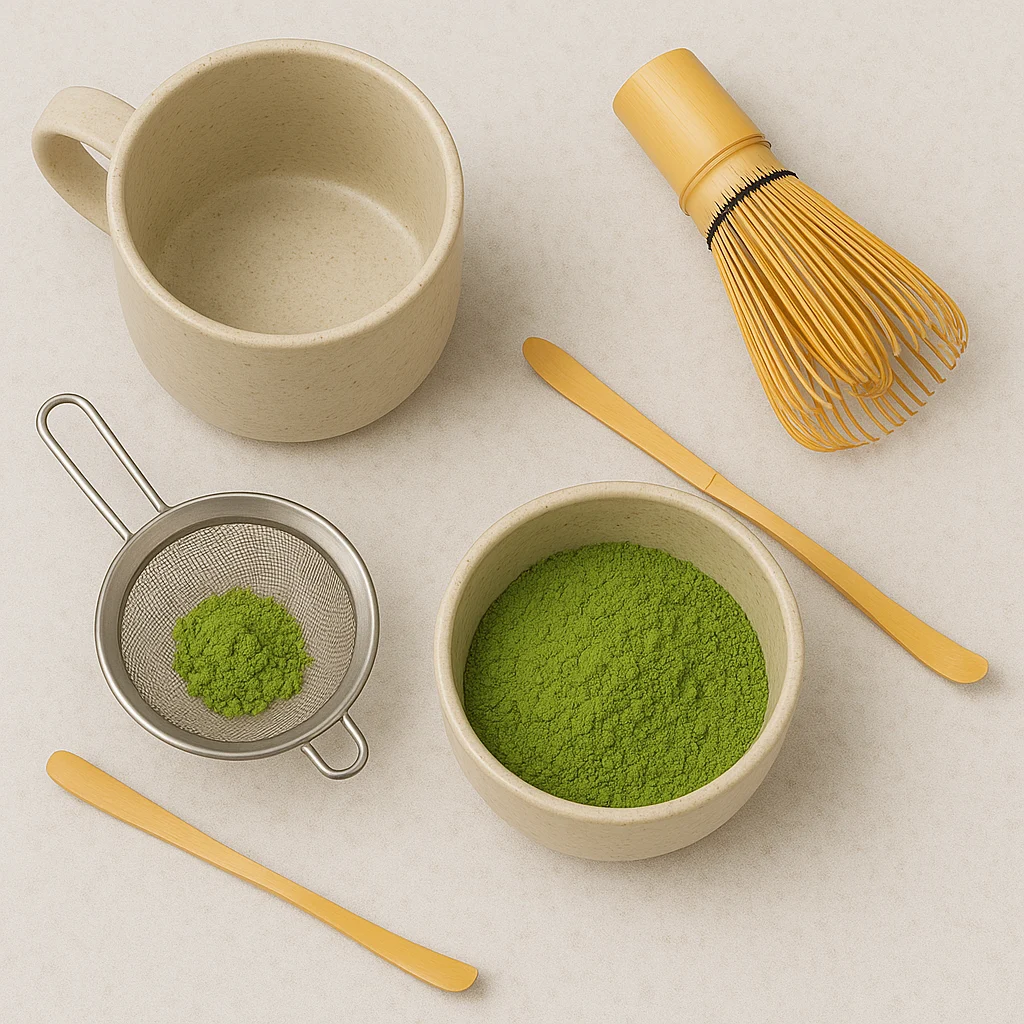
You can grab a starter kit online or mix and match what you’ve already got in the kitchen.
Quick & Easy Steps to Make Matcha Tea
Honestly, making matcha tea is kinda relaxing once you get the hang of it:
- Sift 1–2 teaspoons of matcha into a bowl (skip this and you’ll regret it—clumpy matcha is a buzzkill).
- Add hot water (just under boiling, around 175°F).
- Whisk like a pro in a zigzag motion until you see a nice froth.
- Sip it straight, or pour in warm milk for a latte twist.
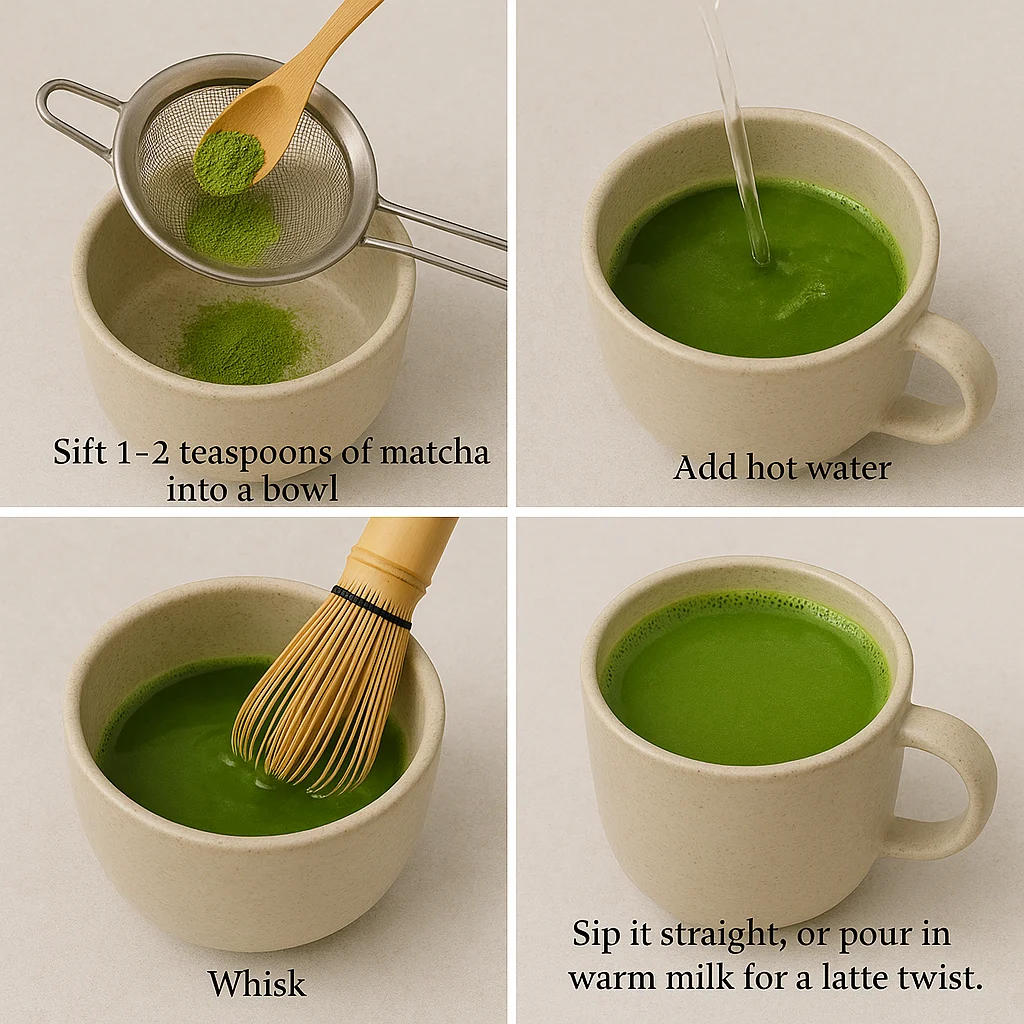
Done. You just made matcha. Proud of you!
Different Ways to Enjoy Matcha Tea
Matcha Tea Isn’t Just for Sipping
Here’s the fun part—matcha tea isn’t just a drink; it’s a whole lifestyle. While a hot cup of classic matcha is comforting (especially on chilly mornings), there are so many cool ways to mix it into your day.
Honestly, I didn’t believe it until I tried matcha pancakes—yup, green breakfast bliss. The earthy flavor pairs perfectly with sweet stuff like vanilla or almond. You can toss it into smoothies, oatmeal, even your post-workout protein shake for an antioxidant punch.
Matcha Lattes, Smoothies, and More
If you’re into lattes, matcha lattes are a total win. Swap out your usual espresso shot for a scoop of matcha and frothy milk—iced or hot, it’s creamy, slightly grassy, and oddly addictive.
Not a latte person? Try:
- Matcha smoothies with banana and spinach
- Matcha chia pudding (make it overnight—so easy)
- Matcha energy balls with dates and coconut
The trick? Just start small—about 1/2 teaspoon of matcha goes a long way.
Baking with Matcha
Oh, and don’t sleep on baked goods. Matcha tea in cookies, muffins, even cakes gives everything a pop of color and a unique twist. It’s earthy, slightly sweet, and totally Insta-worthy.
If you’re gluten-free like me, it’s a game-changer—bake it into brownies or blend into frosting. You’ll never look at dessert the same way again.

Tips for Buying and Storing Matcha Tea
How to Choose Quality Matcha Tea
When you’re staring at ten tins of matcha tea on a shelf (or scrolling Amazon at 11 p.m.), it’s easy to feel lost. Here’s the deal: color and origin are your best friends.
- Go for vibrant green—dull or yellowish powder? Skip it.
- Stick with Japanese matcha—regions like Uji, Kyoto, or Nishio are top-tier.
- Look for “ceremonial grade” if you’re drinking it straight. “Culinary grade” works great for cooking and baking.
Also, peep the packaging. If it’s in a tin or a resealable opaque pouch, that’s a good sign—it means someone cared enough to protect it from light and air.
Storage Tips to Keep It Fresh
Matcha’s like a moody houseplant—it needs the right conditions to thrive. Once opened, it starts losing its flavor and color if you don’t store it properly. Here’s how to keep it fresh:
- Keep it in the fridge—yes, really. But make sure it’s tightly sealed to avoid moisture.
- Use it within 1–2 months after opening for the best taste.
- Avoid light, heat, and air—they’re matcha’s enemies.
If your matcha starts smelling dull or looking brownish-green, it’s time to toss it and restock.
Is Matcha Tea Right for You?
Who Should Drink Matcha Tea?
So, is matcha tea your thing? Honestly, it’s great for almost everyone. If you want steady energy without the coffee crash, matcha delivers. It’s also awesome for folks looking to improve focus, boost antioxidants, or support digestion.
Athletes love it, students swear by it, and wellness junkies can’t get enough. Whether you’re sipping it for calm energy or whisking it into a smoothie before yoga, matcha fits right in.
It’s even safe for most people with gluten sensitivities—just double-check your source to be sure it’s certified gluten-free.
Who Should Be Cautious?
That said, matcha isn’t a perfect fit for everyone. Because it contains caffeine, people who are super sensitive might want to go easy. If you’re pregnant, nursing, or taking certain meds, check with your doc before diving in.
Also, overdoing it (think 5+ cups a day) could lead to side effects like upset stomach or sleep issues. Moderation is key—1 to 2 servings a day is plenty to enjoy all the benefits without the buzz.
FAQs About Matcha Tea
What does matcha tea do to your body?
Matcha tea gives your body a natural energy boost while loading it up with antioxidants. It helps fight inflammation, improves focus, and may even aid metabolism and heart health. You’re not just sipping tea—you’re fueling up smart.
Is there a downside to matcha?
Sure, like anything, too much of a good thing can backfire. Overconsuming matcha—especially the highly concentrated kind—can lead to insomnia, digestive issues, or caffeine overload if you’re sensitive. Stick to 1–2 servings daily and you’re golden.
Is it okay to drink matcha every day?
Absolutely. In fact, drinking matcha tea daily may enhance mental clarity, promote detoxification, and support overall wellness. Just be mindful of your caffeine intake and pick high-quality matcha.
Is matcha tea high in caffeine?
It’s got caffeine—about 70mg per serving (depending on how strong you make it). That’s less than coffee, but more than regular green tea. The good news? Thanks to L-theanine, the caffeine hits slower, giving you steady energy without the crash.
Conclusion: Your Matcha Tea Journey Starts Now
So there you have it—matcha tea isn’t just a trend, it’s a powerhouse brew with legit benefits. From boosting focus to helping with fat burn and giving your bakes a cool green twist, matcha’s got something for everyone.
And let’s be real: learning to whisk your own cup at home? Kinda satisfying. Whether you’re going ceremonial or blending into muffins, matcha brings calm energy and a little fun to your routine.
Connect With Us!
Want to see how others are enjoying their matcha moments?
- Follow us on Facebook for daily recipes, matcha tips, and behind-the-scenes peeks into our kitchen.
- Get inspired on Pinterest with boards full of gluten-free matcha treats, drinks, and creative ideas you can pin and try later!
